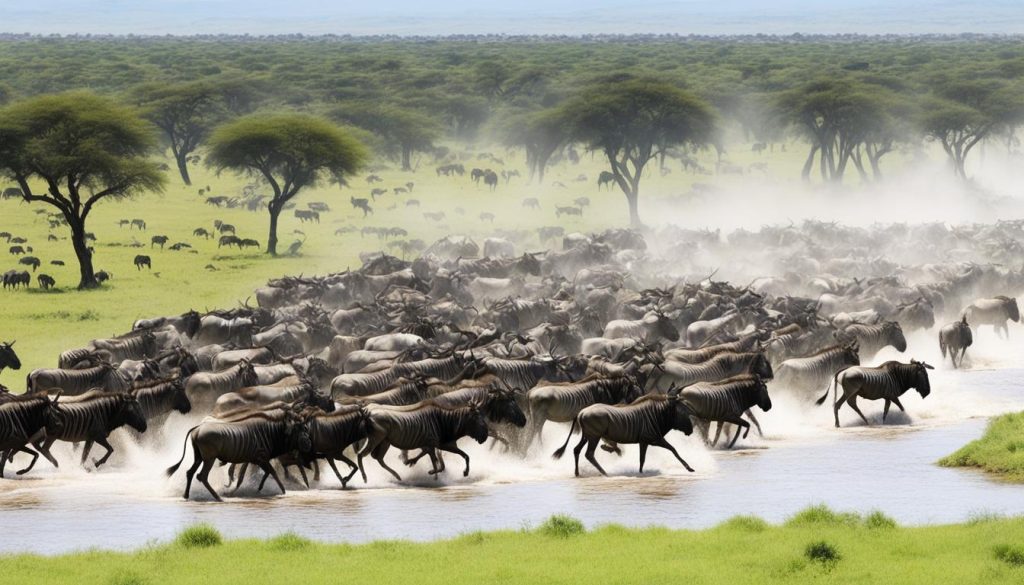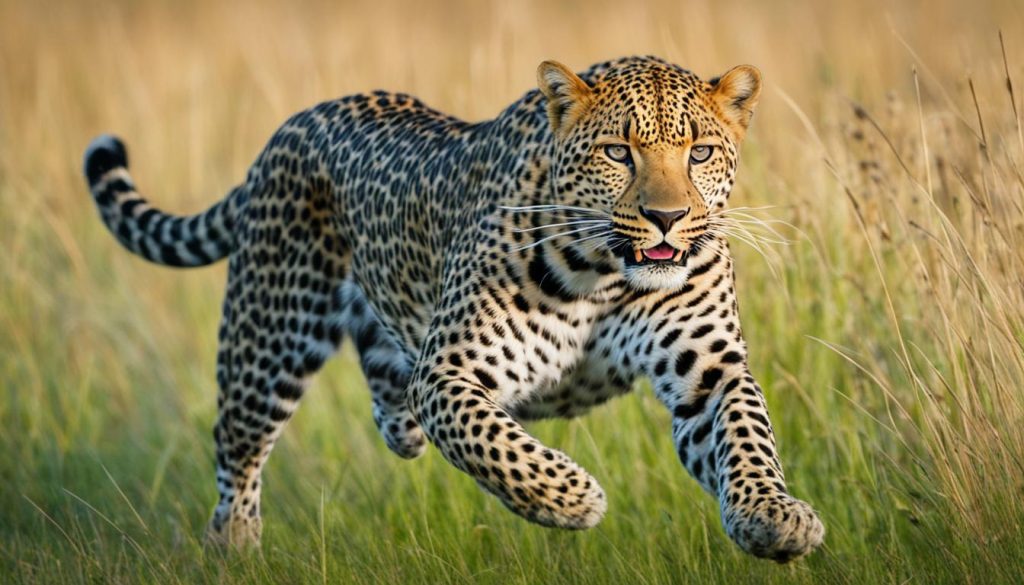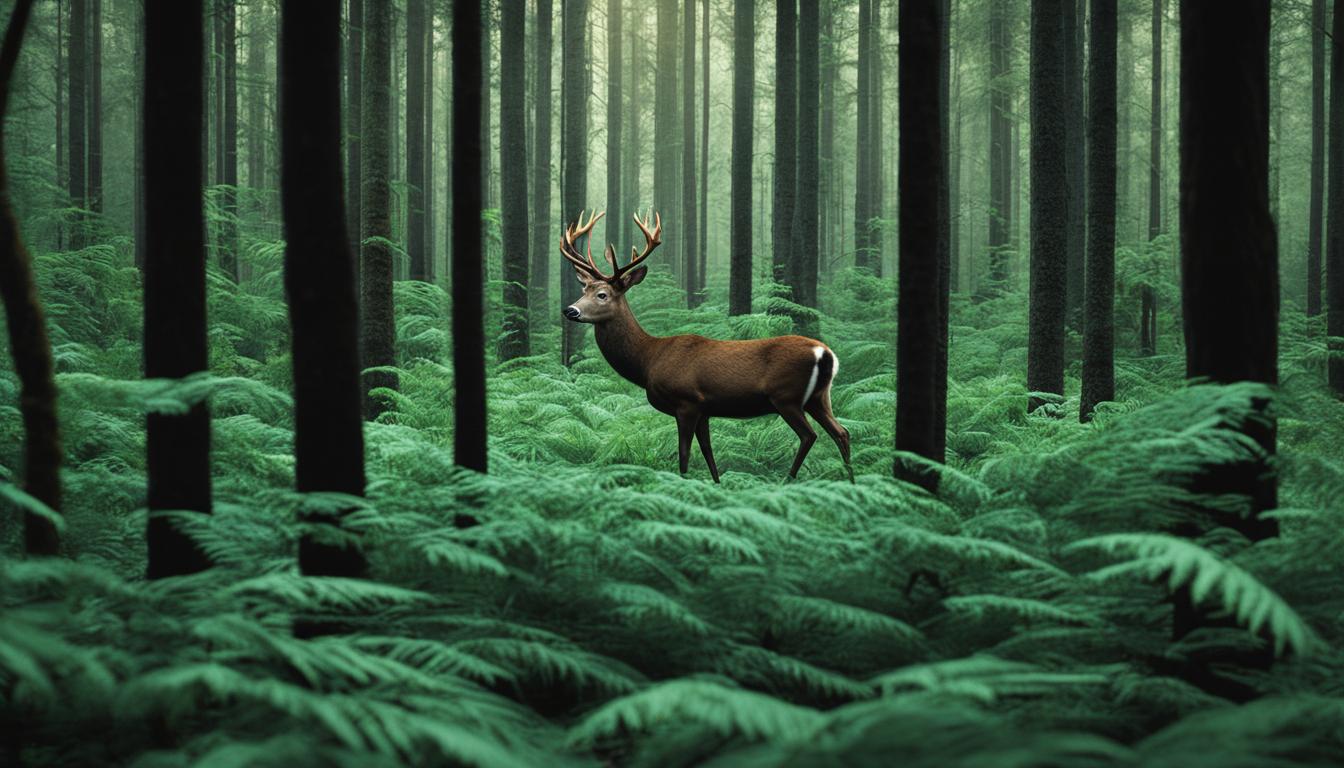Wildlife photography has always been a fascinating way to document the wonders of the natural world. Now, with the advancements in motion-detecting wildlife cameras, scientists are able to capture elusive creatures like never before. These innovative cameras have become smaller, cheaper, and more reliable, allowing researchers across the United States to gather invaluable data on wildlife behavior and movements.
By placing motion-detecting cameras in various habitats, scientists have been able to document and observe a wide range of animals, including the elusive ocelots, lynx, javelinas, and coatimundi. These cameras have provided a unique insight into the lives of these incredible creatures, offering glimpses into their behaviors and habits that were once shrouded in mystery.
The data collected from these cameras has proven to be crucial for scientists studying the effects of global warming, as well as for tracking animal movements in protected areas like Yellowstone National Park. By understanding how wildlife adapts to environmental changes and monitoring their movements, we can better protect and conserve their habitats.
Key Takeaways:
- Motion-detecting wildlife cameras have revolutionized wildlife photography and documentation.
- These cameras enable scientists to capture images of elusive creatures and study their behavior.
- Data from these cameras helps researchers understand the effects of global warming and track animal movements.
- Wildlife photography has gained public interest by showcasing charismatic critters in their natural habitats.
- Remote camera technology contributes to biodiversity conservation efforts.
The Benefits of Remote Cameras in Wildlife Research
Remote cameras have proven to be an incredible tool in acquiring data on wildlife. These cameras can be left in the backcountry for extended periods, allowing researchers to capture images of animals in their natural habitats. This provides invaluable insights into animal behavior and movement patterns, helping to fill in data gaps and enhance our understanding of wildlife populations.
One of the key advantages of remote cameras is their ability to capture images of animals that are elusive or difficult to track. By using motion sensors and infrared technology, these cameras can detect and document wildlife activity without disturbing the animals or their habitats. This non-intrusive approach ensures the data collected remains accurate and unbiased.
Furthermore, remote cameras provide researchers with the opportunity to study animal behavior in a way that was previously challenging. By deploying cameras in strategic locations, researchers can observe animals’ natural behaviors and interactions without human interference. This firsthand documentation unveils new insights into social structures, feeding habits, and migration patterns.
Fill in Data Gaps and Enhance Research
Remote cameras play a crucial role in acquiring accurate data on wildlife. These cameras can help fill in blanks in our knowledge, providing a more comprehensive understanding of animal populations and their ecological role.
For example, remote cameras have allowed researchers to study the presence and movements of endangered species in remote areas. They have provided vital information on population sizes, habitat preferences, and migration routes. By analyzing the data collected from these cameras, scientists can make informed decisions regarding conservation strategies and protected areas.
Remote cameras also offer a cost-effective and efficient means of monitoring wildlife over large geographic areas. Traditional surveys and field observations can be time-consuming and limited in their scope. With remote cameras, researchers can cover a wider range of habitats and collect data continuously, providing a more accurate representation of wildlife activity.
Subjectivity in Camera Placement
The placement of remote cameras requires careful consideration to ensure accurate and reliable data collection. Placement subjectivity can introduce biases that may compromise the research findings.
Researchers must consider various factors when deciding where to position remote cameras. These factors include habitat diversity, animal preferences, and potential obstacles to wildlife movement. By strategically selecting camera locations, researchers can minimize bias and obtain a more comprehensive profile of the wildlife population.
It is essential to obtain multiple perspectives on camera placement to mitigate subjectivity. By involving different experts familiar with the study area, researchers can ensure a well-rounded approach to camera deployment. Additionally, employing statistical techniques and data analysis can help account for any inherent biases and establish robust correlations between camera data and the actual wildlife population.
| Benefits of Remote Cameras in Wildlife Research |
|---|
| Allows for non-intrusive wildlife observation |
| Provides insights into elusive and difficult-to-track species |
| Enhances understanding of animal behavior and movement patterns |
| Cost-effective and efficient monitoring over large areas |
| Fills in data gaps and contributes to conservation efforts |
The Downsides of Remote Cameras in Wildlife Research
While remote cameras have numerous benefits in wildlife research, it is important to consider the potential downsides and challenges associated with their use. These downsides include animal attacks on cameras, ethical concerns, and the intrusion of surveillance technology into natural habitats.
Animal Attacks on Cameras
One of the main challenges of using remote cameras is the risk of animal attacks. In some cases, animals such as bears and wolverines have been known to approach and damage these cameras, potentially leading to their destruction. This can result in the loss of valuable data and financial resources.
Despite their rugged construction and camouflage, remote cameras can still attract the curiosity or aggression of wildlife. The presence of these cameras in the animals’ natural habitats may disrupt their behavior or trigger defensive responses, compromising the integrity of the research and potentially endangering both the animals and the camera equipment.
Ethical Concerns
The use of remote cameras in wildlife research raises ethical concerns among scientists and conservationists. There is an ongoing debate about the role of these cameras in assisting hunters with scouting for game. While some argue that this technology can contribute to responsible hunting practices and wildlife management, others question the ethics of using surveillance equipment in the pursuit of hunting game.
Additionally, the subjective aspect of introducing surveillance cameras into nature raises ethical questions about privacy and intrusion. It is essential to consider the potential impact on the animal’s natural behaviors and their ability to thrive undisturbed in their habitats.
Intrusion into Nature
The use of remote cameras can be seen as an intrusion into the natural environment, disrupting the balance between humans and wildlife. These cameras introduce a level of surveillance and monitoring that may alter natural behaviors, such as mating rituals, hunting patterns, or migration routes.
The presence of remote cameras may also impact the overall ecological dynamics of an area. Animals may change their behavior or avoid certain areas due to the perceived threat or disturbance caused by the cameras. This can have cascading effects on the entire ecosystem, potentially compromising the accuracy and completeness of research findings.
Despite these downsides, remote cameras continue to be a valuable tool in wildlife research. The benefits they provide in gathering data and studying animal behavior cannot be overstated. However, it is crucial to address and mitigate these challenges to ensure the ethical and responsible use of remote cameras in the field of wildlife research.
Examples of Remote Camera Discoveries
Remote cameras have provided valuable insights into the behavior and migration patterns of animals. Through these cameras, we have been able to capture mesmerizing images of migrating animals, gaining a deeper understanding of their incredible journeys.

One remarkable example is the documentation of migrating mule deer. These remote cameras have captured the breathtaking moments of their migration, revealing the sounds of their mewling, a unique vocalization that adds to the captivating experience.
Live-streaming cameras have also become popular, allowing us to witness the wonders of wildlife in real-time. One such camera showcases the majestic bison in Canada, roaming freely across vast plains. These live feeds enable us to observe their behavior and interactions, providing valuable behavior insights.
Another fascinating live-streaming camera takes us underwater into enchanting kelp forests. Here, we can witness the intricate dance of marine life, marvel at colorful fish, and observe the delicate balance of this underwater ecosystem.
The Impact on Conservation Efforts
These discoveries not only expand our knowledge and appreciation of the natural world but also play a crucial role in conservation efforts. By capturing stunning images and live streaming nature’s beauty, we inspire others to protect and preserve these precious habitats for future generations.
| Animal | Location | Insights |
|---|---|---|
| Migrating Mule Deer | Various locations | Reveals mewling sounds, captures migration patterns |
| Bison | Canada | Live-streaming showcases behavior and interactions |
| Underwater Kelp Forest | Various underwater locations | Provides insights into marine life and ecosystem dynamics |
These remote camera discoveries not only captivate us with their beauty but also remind us of the importance of safeguarding our natural world. By leveraging the power of technology, we can continue to uncover hidden wonders, gain invaluable insights into animal behavior, and contribute to the conservation of our diverse ecosystems.
The Fascination with Wildlife Photography
The use of motion-detecting wildlife cameras has not only advanced scientific research but also captivated the public’s interest. Many charismatic critters have been caught on camera, seemingly striking poses for the lens. Amusing photos and videos have become popular, showcasing the fascinating world of wildlife. This growing fascination with wildlife photography highlights the importance of conserving and appreciating the natural world.

Wildlife photography has undergone a remarkable transformation with the advent of motion-detecting cameras. These cameras have enabled us to capture the most charming and elusive creatures in their element. From mischievous monkeys grinning at the lens to majestic lions caught mid-roar, these animal poses are a testament to the beauty and diversity of the natural world.
“The charm of wildlife photography lies in its ability to freeze a moment in time, revealing the intimate and often amusing expressions of the animal kingdom.” – Jane Goodall
Amusing photos and videos of wildlife have gained immense popularity on social media platforms and video sharing websites. People are fascinated by the playful antics of otters, the majestic leaps of dolphins, and the hilarious expressions of meerkats. These images and videos serve as a constant reminder of the wonders of nature and the need to protect and conserve our wildlife.
Capturing Charismatic Critters in Action
Wildlife photographers have mastered the art of capturing charismatic critters in amusing and endearing poses. From the comical expressions of curious squirrels to the acrobatic leaps of playful lemurs, these photographs invoke a sense of wonder and appreciation for the natural world.
Through wildlife photography, we are able to witness the intricate behaviors and interactions of animals that often go unnoticed. Whether it’s a group of penguins huddling together to stay warm or a bear scratching its back against a tree, these snapshots offer a glimpse into the fascinating lives of creatures that share our planet.
The Importance of Amusing Photos in Wildlife Conservation
Amusing wildlife photos not only entertain and delight but also play a crucial role in wildlife conservation efforts. These captivating images resonate with people from all walks of life, fostering a connection and empathy towards animals and their habitats.
As we continue to face environmental challenges such as habitat loss and climate change, it is essential to raise awareness and inspire action. Amusing wildlife photos serve as powerful tools to communicate the importance of conservation and the urgent need to protect our natural heritage for future generations.
| Benefits of Amusing Wildlife Photos | Conservation Impact |
|---|---|
| 1. Engage a wider audience in wildlife preservation efforts | – Increased support for conservation organizations |
| 2. Spark curiosity and interest in the natural world | – Educational opportunities for wildlife awareness |
| 3. Foster empathy and compassion towards animals | – Encourage responsible environmental practices |
| 4. Highlight the interconnectedness of species and ecosystems | – Promote sustainable living and biodiversity conservation |
Conclusion
Remote camera technology has revolutionized wildlife documentation, enabling scientists to gather valuable data on elusive creatures and study their behavior and movements. These motion-detecting cameras have provided unprecedented insights into the effects of environmental changes on wildlife, highlighting the importance of biodiversity conservation.
Through the use of remote cameras, stunning images and videos of wildlife in their natural habitats have been captured, captivating audiences and fostering a greater appreciation for the natural world. These visuals not only serve as a testament to the beauty and diversity of our planet’s ecosystems but also raise awareness about the need to protect and conserve them for future generations.
The advancements in remote camera technology have opened up new avenues for research and exploration, allowing scientists to uncover hidden aspects of animal behavior and migration patterns. By accurately documenting and analyzing wildlife populations, we gain a better understanding of the intricate web of life and can make informed decisions to safeguard our planet’s biodiversity.
FAQ
What is wildlife photography?
Wildlife photography is the practice of capturing images of animals in their natural habitats.
How do motion-detecting wildlife cameras work?
Motion-detecting wildlife cameras are equipped with sensors that detect movement, triggering the camera to capture images or videos.
What are the benefits of using remote cameras in wildlife research?
Remote cameras allow scientists to acquire data on elusive creatures, fill in data gaps, and study animal behavior and movements.
What are the downsides of using remote cameras in wildlife research?
Remote cameras can be attacked by animals, such as bears and wolverines, and there are ethical concerns about using them for hunting purposes and invading the natural environment.
What discoveries have been made using remote cameras?
Remote cameras have captured images of migrating animals, provided insights into animal behavior, and showcased diverse wildlife through live-streaming cameras.
Why is wildlife photography so fascinating?
Wildlife photography captures charismatic critters in their natural habitats, showcasing amusing poses and creating a greater appreciation for the natural world.
How has remote camera technology advanced wildlife documentation?
Remote cameras have revolutionized wildlife research by allowing scientists to gather valuable data, study environmental changes, and contribute to biodiversity conservation.






